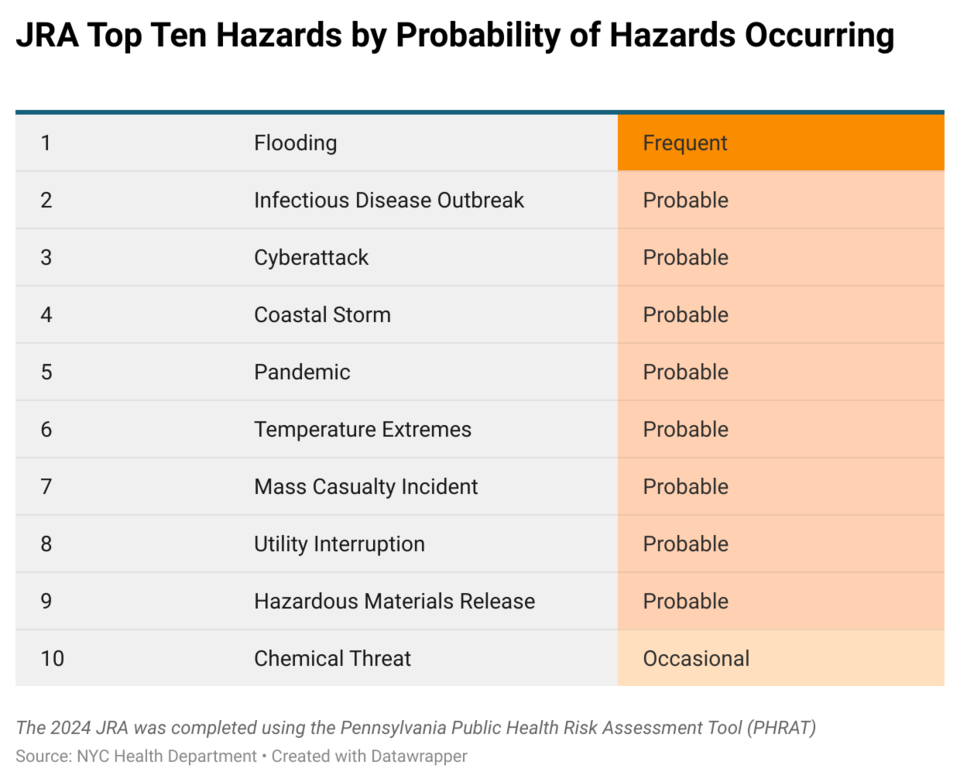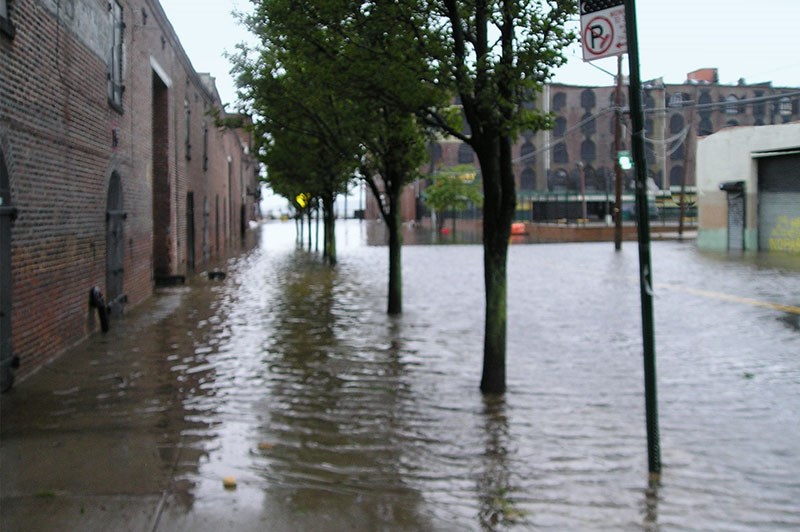Flooding is the top public health hazard for New Yorkers, according to a new report from the New York City Department of Health and Mental Hygiene.
Conducted every five years, the Jurisdictional Risk Assessment collects information about public health hazards, analyzes them and identifies the most severe threats based on how likely they are to create a public health disaster. Top hazards also include infectious disease outbreak, cyberattack, coastal storm and a pandemic.
"Public health is preventative health – and this includes identifying and preventing emergencies before they impact New Yorkers,” said Acting Health Commissioner Dr. Michelle Morse. “By using data-driven insights and collaboration with our New York City agency and community partners, we can enhance preparedness, strengthen response efforts, and build more resilient communities."
Flooding was identified as the most pressing public health hazard, as rising sea levels and intensifying storms due to climate change are expected to make flooding a more frequent occurrence and significant risk to New Yorkers.

The assessment defined hazard frequency in the following ways:
- Occasional: The hazard is likely to occur at least once within a 100-year timespan
- Probable: The hazard is likely to occur several times within a 100-year timespan
- Frequent: That hazard is likely to occur repeatedly, even annually, within a 100-year timespan
The report also provides an in-depth look at each hazard, along with mitigation strategies to help minimize risks and protect public health. Recommendations include:
- Flooding
- Use backwater valves to prevent sewer backups.
- Build rain gardens to absorb stormwater and reduce runoff.
- Promote greenspace stewardship for stormwater management.
- Infectious Disease Outbreak
- Strengthen disease surveillance to catch outbreaks early.
- Enhance public health communication for prevention and treatment.
- Ensure hospitals can scale up care during outbreaks.
- Cyberattacks
- Enhance cybersecurity across City agencies with regular updates.
- Rain employees to detect and respond to threats.
- Develop backup systems for critical infrastructure.
“We appreciated collaborating with DOHMH on this report, as it aligns with our mission to prepare before, during, and after emergencies for all hazard types,” said New York City Emergency Management Commissioner Zach Iscol. As the coordinating agency for all events, we are always looking for resources to create a risk-informed response to ensure we are helping the most vulnerable communities. The JRA helps us better understand public health impacts and strategies to reduce strain on public health services.”




